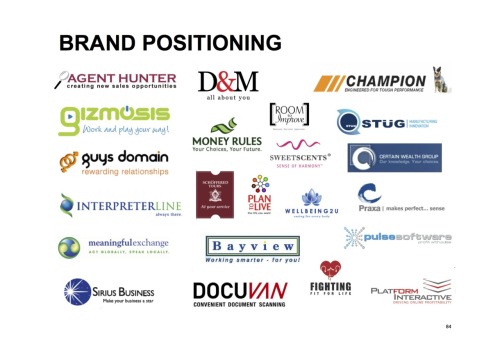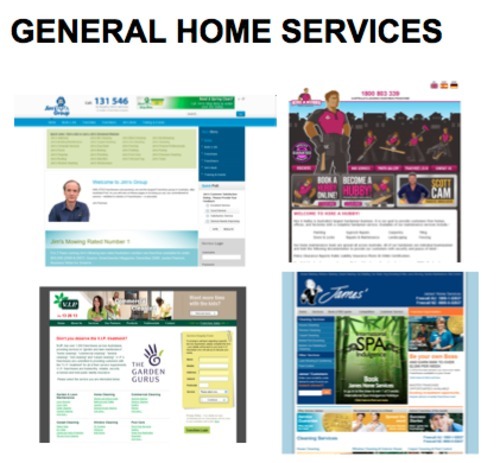by admin | Jan 18, 2012 | Blog, Strategy
The creative strategy is the translation of the brand objectives and attributes, into communication that will:
Having a strong creative strategy is more important for the SME which doesn’t have the corporate budget to drum in the message using the sheer weight of media dollars. An SME is also in a better position to develop a strong creative strategy:
- Unlike a big corporate organisation, an SME does not have to deal with layers of management and political games.
- In most cases there is no brand baggage.
Creative strategy is rarely used by businesses outside the large and well established Consumer Goods and Services; from FMCG to Banking, Retail, Telecommunications, Cars, etc. B2B and Professional Services companies, and in fact most SME’s can benefit from having a Creative Strategy.
- Provides consistency which is crucial in building memorability and trust with the target audience
- Ideally, the theme is will be derived from or generate synergy with the brand name or the positioning statement.
- Allows for development of more ‘creative’ communication, which also makes it more memorable. Creative themes achieve this by developing synergy between words and graphics and thus become more memorable.This means that you do not have to expose your target audience to your message as many times as you would otherwise with ‘average’ or less interesting communication, which means you can spend less money communicating with your prospects to turn them into customers.
- Well communicated THEMES deliver greater marketing ROI because they go beyond features and benefits in the mind of the prospect and engage them emotionally as well as logically.
The more creative the communication, the more memorable and comprehensible it is. Which means that you do not have to expose your target audience to your message as many times as you would otherwise with ‘average communication’.
A consistent THEME that uses the name of the brand or its positioning or ultimately both will always yield better results in achieving the above objectives.
MORE CREATIVE = LESS FREQUENCY = GREATER ROI
by admin | Jan 17, 2012 | Blog
The creative strategy is the translation of the brand objectives and attributes,
into communication that will:
- Grab customer Attention,
- Arouse their Interest,
- Stimulate their Desire and
- Prompt them into Action.
Having a strong creative strategy is more important for the SME which doesn’t have the corporate budget to drum in the message using the sheer weight of media dollars. An SME is also in a better position to develop a strong creative strategy:
- Unlike a big corporate organisation, an SME does not have to deal with layers of management and political games.
- In most cases there is no brand baggage.
Creative strategy is rarely used by businesses outside the large and well established Consumer Goods and Services; from FMCG to Banking, Retail, Telecommunications, Cars, etc. B2B and Professional Services companies, and in fact most SME’s can benefit from having a Creative Strategy.
The creative strategy requires a CREATIVE THEME:
- Provides consistency which is crucial in building memorability and trust with the target audience
- Ideally, the theme is will be derived from or generate synergy with the brand name or the positioning statement.
- Allows for development of more ‘creative’ communication, which also makes it more memorable. Creative themes achieve this by developing synergy between words and graphics and thus become more memorable.This means that you do not have to expose your target audience to your message as many times as you would otherwise with ‘average’ or less interesting communication, which means you can spend less money communicating with your prospects to turn them into customers.
- Well communicated THEMES deliver greater marketing ROI because they go beyond features and benefits in the mind of the prospect and engage them emotionally as well as logically.
The more creative the communication, the more memorable and comprehensible it is. Which means that you do not have to expose your target audience to your message as many times as you would otherwise with ‘average communication’.
A consistent THEME that uses the name of the brand or its positioning or ultimately both will always yield better results in achieving the above objectives.
MORE CREATIVE = LESS FREQUENCY = GREATER ROI

by admin | Jan 13, 2012 | Blog, Design

Brand Positioning
Here is a mix of examples of logos, brand names and positioning statements that we have had the pleasure of working with and/or developing for our clients.
Most importantly, note how easy it is to develop creative, campaignable marketing communication for these brands.
by admin | Jan 13, 2012 | Blog
Brand Positioning
Here is a mix of examples of logos, brand names and positioning statements that we have had the pleasure of working with and/or developing for our clients.
Most importantly, note how easy it is to develop creative, campaignable marketing communication for these brands.

by admin | Jan 12, 2012 | Blog, Design


Take a look at the websites of 2 similar categories at different stages of maturity:
1. The General Home Services category and
2. A sub-segment of this category ‘Cleaning’
Their brand positioning are clearly shown through their design and content development.
The first is much more mature in terms of marketing communication. Its’ websites project a much more professional and corporate image.
The second is less professional and looks like it is a “small” business, which it is compared to the larger Head Office Marketing driven Franchise!






Recent Comments